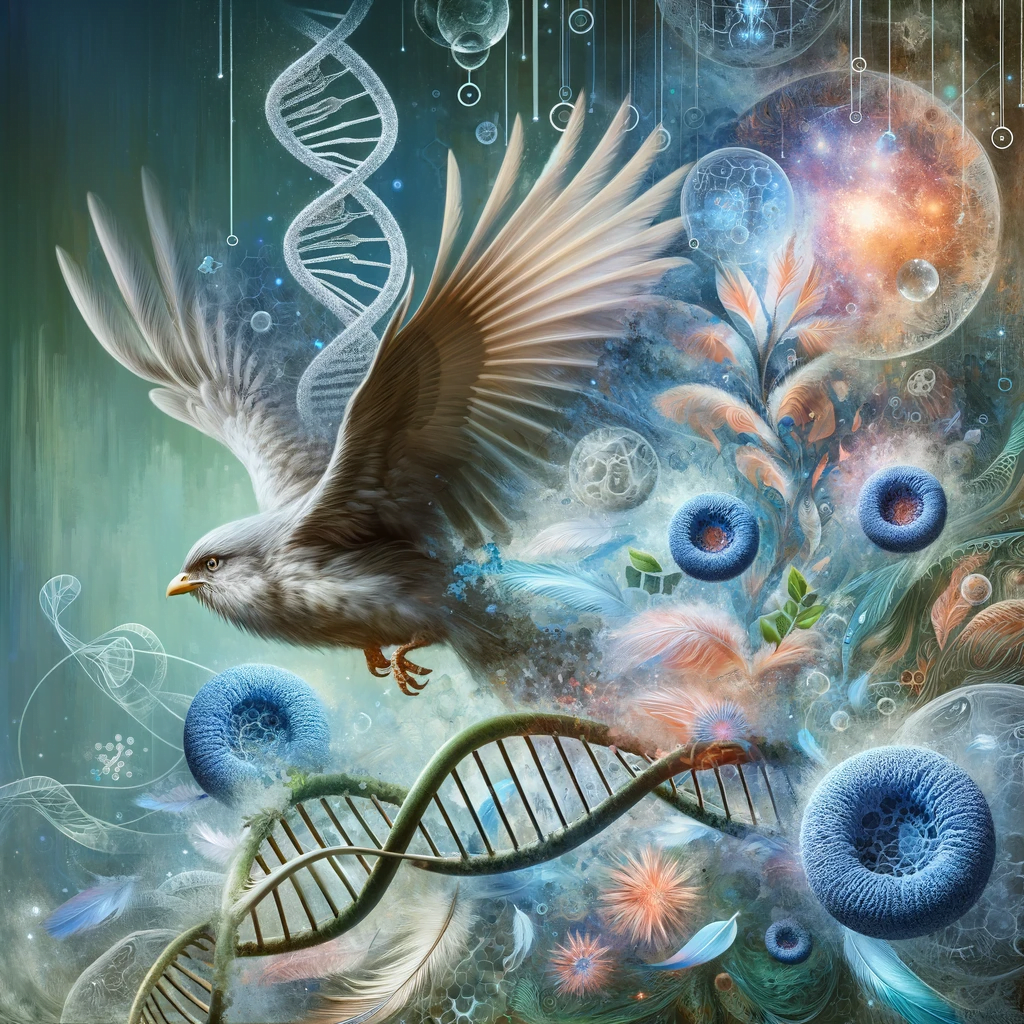
Energy Metabolism’s Influence on Longevity: Insights from Birds
Among the intricate tapestry of life, lie clues for understanding the deep mysteries of longevity and life extension. The study of genetic differences between mammals and birds, particularly focusing on energy metabolism, can provide valuable insights into species longevity. This commentary explores this exciting concept, dipping into fields of aging research and healthspan, towards our ultimate quest for life quality and extension.
Flight and Longevity: The Bird-Bat Paradox
Generally, larger animals live longer; however, certain small avian and bat species challenge this pattern. For these creatures, flight, an immensely energy-intensive activity, showcases interesting correlations with longevity. It seems the genetic adaptations enhancing energy metabolism and consequently, flight, fortuitously also confer longevity. But another enigma presents itself here: not all birds and bats, even with their aerial abilities, live longer. Weaving threads of explanation for this could unlock new dimensions in our understanding of energy metabolism and life extension.
The Mitochondrial Connection to Aging
A deep dive into the subject reveals an intimate link between energy metabolism, mitochondrial function, and oxidative stress. As we age, mitochondrial function depreciates and oxidative stress increases. Yet, these are also characteristics of bodily exertion, for instance, during flight in birds. The body’s systems that have evolved to manage the side-effects of high-energy expenditure, therefore, may have inherent capabilities to increase longevity. It’s no wonder then that longevity research is buzzing with references to mitochondria and oxidative stress.
Practical Implications for Humans
Unraveling these insights from our avian friends and deciphering their applicability to humans prompts an existential question. Will these breakthroughs culminate in viable therapies for humans in the foreseeable future? While we may be a long way from resetting our biology, the relentless march of knowledge, informed by comparative biology studies, incrementally propels us closer to that distant horizon. Until then, we remain hopeful and engaged with the pursuit of a healthier, longer life.
Longevity Biological Clues from the Evolution of Neoaves
Moving from theory to specific examples, we find answers within the evolutionary journey of the bird group, Neoaves. This assemblage survived the Cretaceous-Paleogene extinction event and diversified into the thousands of species we see today. Their adaptation to powerful prolonged flight required changes in size, endothermic processes, and energy metabolism. Unsurprisingly, genes involved in energy metabolism show evidence of positive selection—a testament to flight’s early adaptative requirements.
The Note-Worthy Genetic Purge
Significantly, the Neoaves evolution reveals the gene purging phenomena — a dismissal of particular genes including SLC3A2 and SLC7A5, to improve energetics. This intriguingly translates to lesser oxidation of Branched-Chain Amino Acids (BCAAs) and increased hepatic conversion to triglycerides and glucose. Notably, these purged genes had roles in oxidative stress management and ATP production, thereby, offering new avenues to explore the role of amino acid metabolism in aging and longevity.
Summarizing the Key Longevity Insights:
- Birds and bats showcase a fascinating correlation between energy-intensive flight and improved longevity. This can enlighten us on the evolutionary adaptations regarding energy metabolism.
- Aging research places significant emphasis on the role of mitochondrial function and oxidative stress, as loss of the former and an increase of the latter characterizes aging.
- Studies on the genetic evolution of the Neoaves bird species reveals selective gene purging for improved energetics aligning with flight adaptations. This offers fresh insights into the role of amino acid metabolism in aging and longevity.
- While research continues to bridge the knowledge gaps, the panoptic view of genetic evolution, energy metabolism, and their relation to aging and longevity continue to tantalize researchers in the quest for life extension therapies.
Source Citation: https://www.fightaging.org/archives/2023/11/what-can-be-learned-about-energy-metabolism-and-longevity-from-birds/



